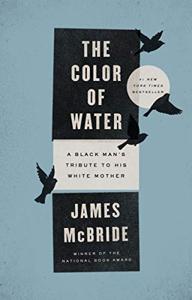
Want to learn the ideas in The Color of Water better than ever? Read the world’s #1 book summary of The Color of Water by James McBride here.
Read a brief 1-Page Summary or watch video summaries curated by our expert team. Note: this book guide is not affiliated with or endorsed by the publisher or author, and we always encourage you to purchase and read the full book.
Video Summaries of The Color of Water
We’ve scoured the Internet for the very best videos on The Color of Water, from high-quality videos summaries to interviews or commentary by James McBride.
1-Page Summary of The Color of Water
Overview
James McBride grew up with a lot of confusion about his racial identity. He never knew who his mother was or where she came from, and when he asked her about it, she said that she was “light-skinned”. This triggered him to wonder if he had any white blood in him. As an adult, James offers the reader insight into his life by alternating between stories told by his mother and himself.
Ruth McBride Jordan was born in Poland to an Orthodox Jewish family, and her name then was Rachel Deborah Shilsky. Her father forced the family to settle in a small town called Suffolk, Virginia when she was two years old. She suffered from teasing and discrimination because of her religion. Later on, at school, Ruth became aware of racial segregation that existed in the society where she lived. Her own mother had been crippled on the left side from polio when she was younger; therefore, she could not speak English and appeared physically handicapped. As a result of this situation Ruth became her mother’s “eyes” as well as ears since her mother could not communicate with others due to language barriers or physical disabilities.
Ruth was disowned by her family when she fell in love with a black man, and converted to Christianity. She then raised eight children with him after moving from Harlem to Red Hook Housing Projects. Her husband became the church’s first reverend, and Ruth refers to him as a man of “vision”.
James was born in the United States after his father died of lung cancer. He recalls how chaotic his childhood was, and that he had a stepfather who helped raise him. His mother also gave birth to four more children with her second husband. School and church were very important to all of them, especially discipline and love for one another. As each child grew up, they went away to school so that they could learn what it takes to survive and flourish on their own someday.
James McBride’s mother, Ruth, was born in 1924 and grew up as part of a black family. She was raised by her grandmother because her own mother had died the year before she was born. James didn’t know about that until he began researching his mother’s past when he wrote The Color of Water. His book is based on interviews with his mother about her childhood and visits to Suffolk County, where she lived during World War II. He also interviewed other people who knew Ruth when she was growing up as well as those who helped him understand what life in Suffolk County must have been like for blacks at the time.
Chapters 1-4
Ruth tells James that she is dead. She was born Rachel Deborah Shilsky, but in America her name changed to Ruchel Dwajra Zylsky. Her father, Fishel Shilsky, was a traveling Orthodox Jewish rabbi who married his wife Hudis according to the Jewish laws of contract: theirs was never a marriage of love. Ruth describes Tateh (Yiddish for “father”) as a “fox” and Mameh (Yiddish for “mother”) as gentle and meek.” Mameh had suffered from polio when she was young, and nearly blind in one eye because of it. At age 19, Ruth left home for New York City where she met black man named Leo Franklyn Jones Jr., whom she later married after divorcing her first husband; her family mourned Rachel’s death just like they would mourn someone who died in real life.
Ruth and her first husband had eight children, but when he died of cancer she married another man. This family continued to grow with four more children. James was the only child who never knew his biological father, but he considered his stepfather as a real father figure. When Hunter Jordan died of a stroke at the age of 72, James almost dropped out of high school and began hanging out with friends and drinking. His mother would ride around on her bike like nothing else mattered in the world while instilling values into her children such as “Educate your mind” and “Don’t tell nobody your business.”





